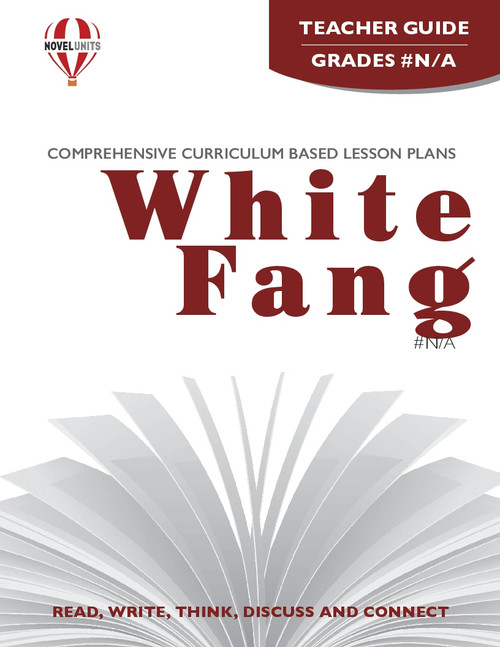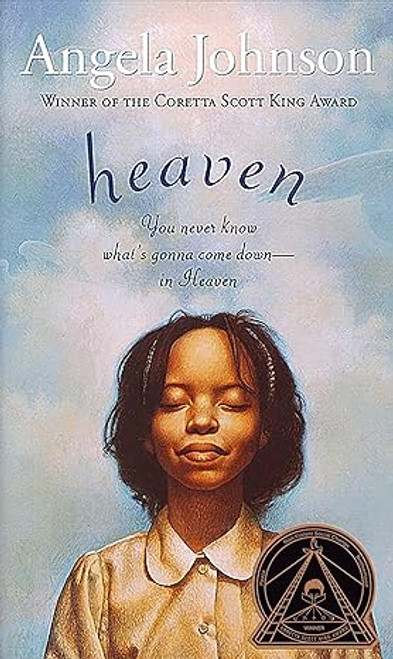Product Overview
White Fang: The Effect Of Environment
Each of White Fang's owners has an impact on his personality, depending on how White Fang is treated--which can lead to discussions about heredity vs. environment as well as animal cruelty, how to care for a pet, and parallels about how people treat each other and the reactions caused.
Ordering Books for White Fang by Jack London
No order minimum; you can order just one copy if that's all you need! :-) Order your class set of books for White Fang now, and take advantage of our bulk order discounts!
Notes About The Literary Touchstone Classics Edition of White Fang
We think the Literary Touchstone Classic edition of White Fang is the best for classroom use. These affordable editions of beloved works are designed by former educators with the needs of both teachers and students in mind.
To help students fully understand the classic work they're studying, every Literary Touchstone Classic includes pre-reading notes that cite important aspects of the text that students should examine and question while reading. Each book also contains an extensive vocabulary list and a glossary that explains unfamiliar allusions and challenging passages.
If you're looking for books that will last for years, Literary Touchstone Classics fit the bill. Sturdy bindings and high-quality paper ensure they'll hold up to repeated use, and they're made in the U.S.A.
Other Editions
If you need to add onto a class set of a different edition or simply prefer another edition, contact us with the ISBN or edition information, and we'll check the availability for you.
If you are reading White Fang with students who need a simplified version, contact us, and we'll help you find one that is appropriate for your situation.
About the Book White Fang |
White Fang’s story starts in the harsh, unforgiving wilderness of the Yukon Territory during the Klondike Gold Rush. Born to a wolf mother and a half-wolf father, White Fang is the only one of his litter to survive. His early days are spent learning the ways of the wild, discovering both its beauty and its perils. Teachers can discuss with students how London uses vivid descriptions to set the tone and atmosphere of the novel from the very beginning. White Fang's life takes a dramatic turn when he encounters humans for the first time. He is captured by Gray Beaver, a Native American chief, who names him White Fang. Under Gray Beaver’s care, White Fang learns to obey and serve humans, though often through harsh lessons. This part of the book offers a way to discuss the concept of adaptation and survival with students, highlighting the differences between life in the wild and in captivity. White Fang's situation worsens when Gray Beaver sells him to Beauty Smith, a cruel and abusive man who forces White Fang into dog fighting. These chapters are intense and can be difficult for younger readers, but they also open up discussions about animal cruelty, the impact of environment on behavior, and the moral complexities of survival. Teachers can guide students through these tough topics with sensitivity, ensuring they understand the deeper messages London conveys. The story reaches a turning point when White Fang is rescued by Weedon Scott, a kind and compassionate man. Scott’s patience and kindness gradually transform White Fang from a fierce, distrustful creature into a loyal and loving companion. This transformation is central to the novel’s message about the power of love and kindness. Teachers can use this part of the story to discuss themes of redemption, trust, and the impact of positive relationships. |
Themes in the book White Fang |
Nature vs. Nurture: One of the most prominent themes in White Fang is the debate between nature and nurture. White Fang’s behavior is initially shaped by his wild instincts, but as he interacts with humans, his experiences begin to shape his actions and personality. This theme can spark interesting classroom discussions about the influence of genetics and environment on behavior and personality. Survival and Adaptation: Survival is a key theme throughout the novel, both in the wilderness and in human society. White Fang’s ability to adapt to changing circumstances is a testament to his resilience and intelligence. Teachers can explore with students how different characters in the novel approach survival and what it teaches us about adaptability and perseverance. The Power of Transformation: White Fang’s transformation from a wild animal to a domesticated companion underscores the novel’s exploration of change and growth. This theme can resonate with students as they reflect on their own personal growth and the factors that influence their development. Teachers can encourage students to draw parallels between White Fang’s experiences and their own lives. Loyalty and Trust: As White Fang learns to trust and love his human companions, he becomes fiercely loyal to them. This theme can be used to discuss the importance of trust in relationships and how it is earned and maintained. Students can also analyze how loyalty is portrayed by different characters in the novel and how it affects their actions.
|
Activity Ideas for the book White Fang |
Character Analysis Activities: One effective way to engage students with White Fang is through character analysis activities. Students can create character maps that track White Fang’s development throughout the novel, noting key events that influence his behavior and personality. This activity helps students understand character development and the impact of external factors on individual growth. Exploring Symbolism and Imagery: White Fang is rich with symbolism and imagery that can enhance students’ appreciation of the novel. Teachers can guide students in identifying and analyzing symbols such as the wilderness, fire, and the various human characters. Discussing how London uses imagery to convey mood and theme can deepen students’ understanding of literary techniques. Debates and Discussions: Organizing debates and discussions around the themes of White Fang can foster critical thinking and engagement. Topics such as the ethics of animal domestication, the nature vs. nurture debate, and the impact of kindness and cruelty provide ample material for thoughtful classroom dialogue. Encouraging students to support their arguments with evidence from the text helps develop their analytical skills. Creative Writing Assignments: Creative writing assignments allow students to connect with the novel on a personal level. Teachers can prompt students to write diary entries from White Fang’s perspective, imagining his thoughts and feelings at different points in the story. This exercise not only enhances empathy but also helps students practice narrative writing and character exploration. Cross-Curricular Connections: White Fang offers opportunities for cross-curricular connections, particularly with science and history. Teachers can explore the historical context of the Klondike Gold Rush, discussing its impact on the environment and indigenous peoples. Additionally, the novel’s depiction of animal behavior and adaptation can tie into biology lessons about evolution and natural selection. Comparing Adaptations: Watching and comparing different adaptations of White Fang can be an engaging way to explore the novel. Teachers can show clips from film and television adaptations, discussing how each version interprets key scenes and characters. This activity helps students understand how different media can bring a literary work to life in varied ways.
|

Customer Service
- We guarantee you'll have the best customer service experience ever with Teacher's Pet Publications.
- We are here to help make things as easy as possible for you!
- Your information is secure. We don't keep your card number on file anywhere, and we don't sell, rent, or give away your personal information.
- We treat you as we would like to be treated as a customer!
- Need help? Have questions? We're always happy to assist you! Contact Us











